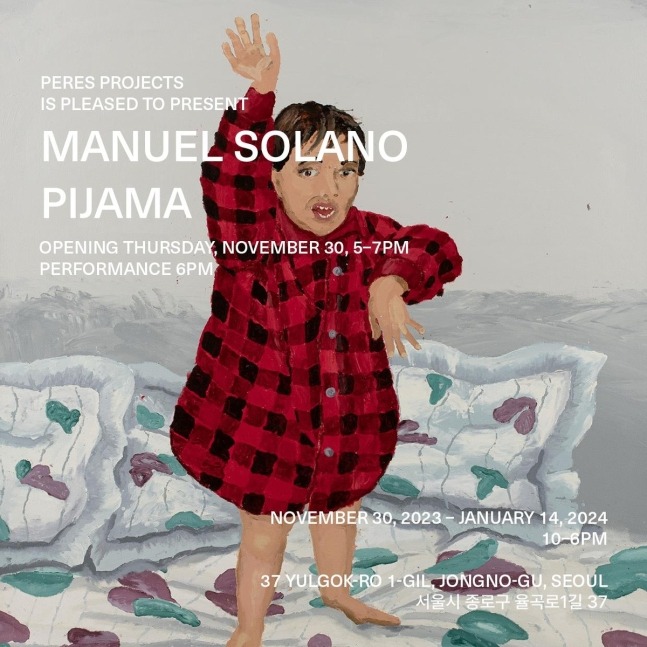
| Period| | 2023.11.30 - 2024.01.14 |
|---|---|
| Operating hours| | 10:00 - 18:00 |
| Space| | Peres Projects Seoul/Seoul |
| Address| | 37, Yulgok-ro 1-gil, Jongno-gu, Seoul, Korea |
| Closed| | Mon |
| Price| | Free |
| Phone| | 02-2233-2335 |
| Web site| | 홈페이지 바로가기 |
| Artist| |
마누엘 솔라노 (Manuel Solano)
|
정보수정요청



|
|
Exhibition Information
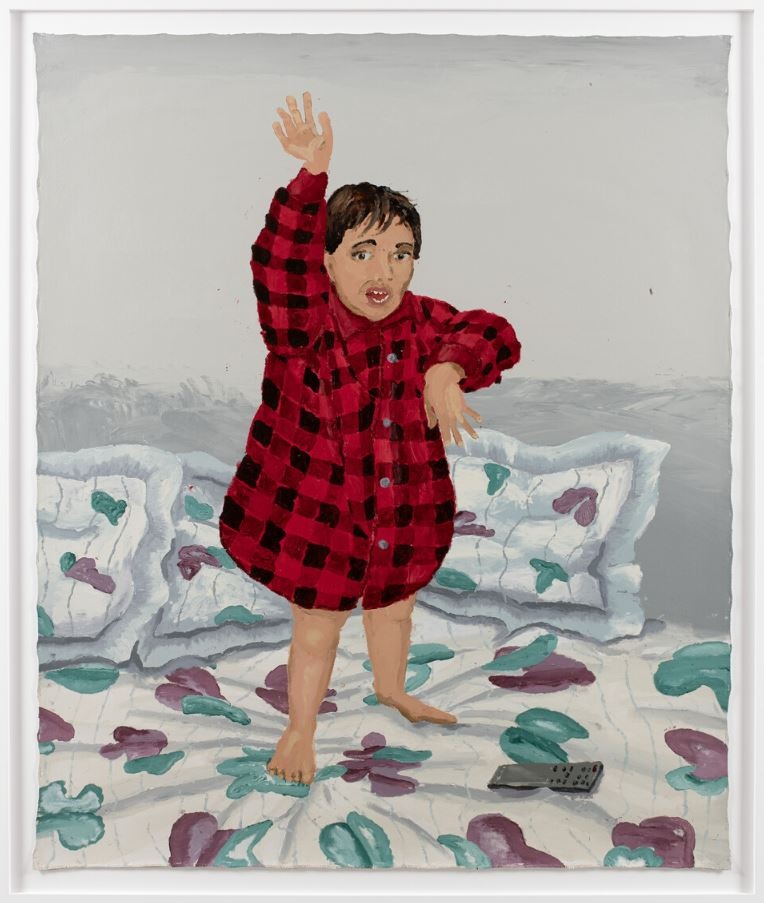
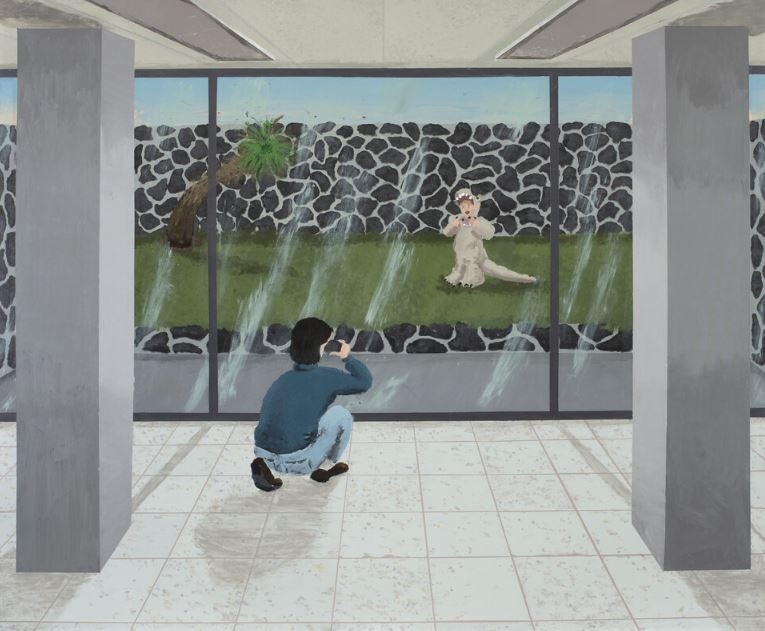
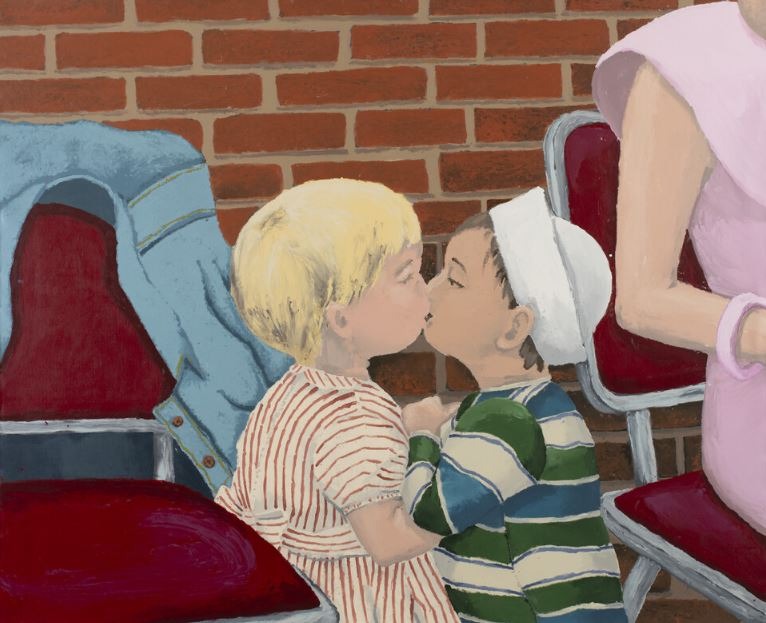
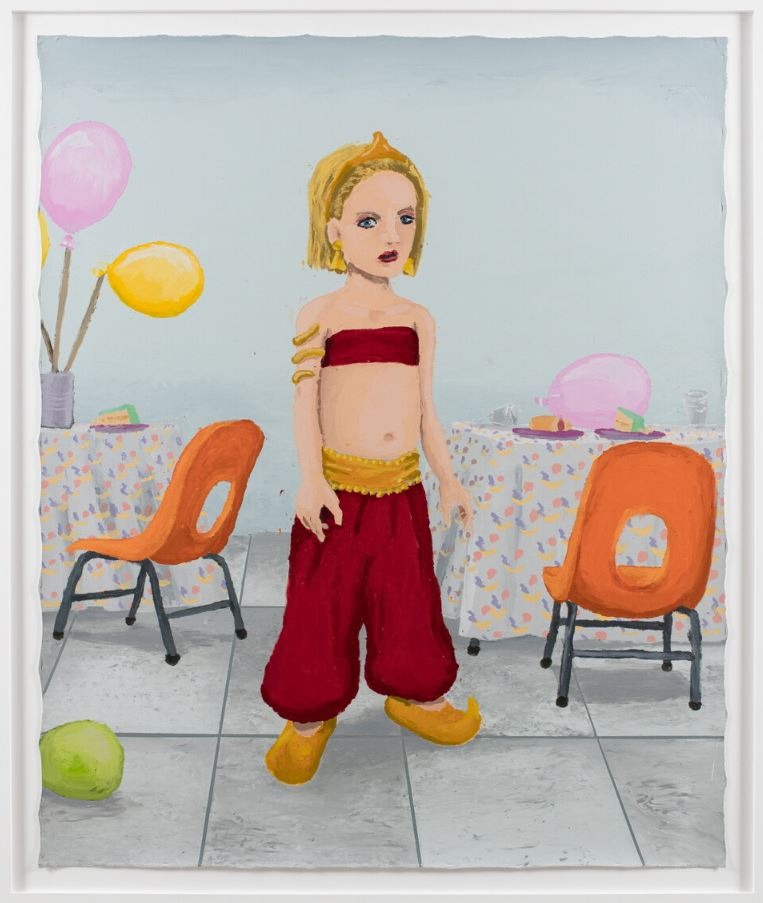
Peres Projects is pleased to present Pijama, Manuel Solano’s (b. 1987 in Mexico City, MX) second solo exhibition with the gallery and their first in Seoul. Building on Solano’s past bodies of work related to their childhood, Pijama expands the artist’s exploration of their early years, excavating and assembling a vivid collection of images derived from memories captured in photos and videos or directly reconstructed from memory. In the midst of a crowd, a child dressed in a costume gazes directly into the camera lens pointed at them, waving a greeting in its direction. Many years later, in the exhibition space, this sequence that opens La Patita (2020) becomes an address to the viewer. Serving as both a framework and backdrop for the exhibition, La Patita and As A Child (2015) are collages of videos from the artist’s family archives. Captured in the genuine aesthetic of 1990s family camcorders, they show Solano as a child, exuberant and buoyant, as they navigate family, friends, and school contexts, often in performance and always aware of the camera’s eye on them. Most of the themes and motifs found in the exhibited paintings, as well as in Solano’s overall body of work, can already be seen in the footage, just like buds waiting to bloom. The new paintings that make up the bulk of the exhibition evoke enlarged still frames. A self-portrait of the artist as a child playing on their parents’ bed in the titular work Pijama (2023); another where they fight with a piñata in Big Bird (2023): these scenes appear as pictorial reinterpretations of fleeting moments glimpsed in the videos. Painted on unstretched canvas, they bring to mind family slides projected on a white sheet hanging on a wall. Solano introduced unstretched canvas into their practice when they returned to painting after losing their eyesight in 2014 due to an HIV-related infection. Initially part of the methodologies they developed to map tactile sketches, which involved placing nails, pins, and string onto the canvas in order to achieve a sort of haptic visualization of the painting, it has since become a signature. Lending the works a rough and bold quality that enhances their visual and emotional impact, their frayed edges also suggest that each painting is a vignette within a bigger, ongoing narrative. What stands out when journeying through the exhibition is precisely this sense of continuity and equivalence between Solano as a child and the artist they have grown into. The exhibition uncovers the roots of their inclination toward unapologetic, camp performativity and self-expression, while the sensitivity, exuberance, determination, and sensuality, central to their current self, permeate the exhibition. A surviving image, Mi Primer Beso (2023) reconstitutes a pivotal moment, captured by the artist’s mother in a photograph that hung in Solano’s room throughout their youth: in the image, Solano and their best friend (the resolute and self-confident protagonist of El otro Disfraz de Jazmín, 2023) share their first kiss, sealing a foundational friendship that has shaped the artist long after its abrupt end. As past experiences migrate from the mind to the canvas, they undergo reconfiguration, elucidation, and consolidation. These lingering and influential memories conjure the facets of a kaleidoscopic mirror reflecting the present. Through a body of work that distills carefully selected fragments from their childhood, Solano skillfully translates not only the experience of childhood but also, and perhaps more importantly, its enduring resonance in adulthood. Memory is not a continuum but a non-linear collage, where authentic memories coexist with those reconstructed from photographs or stories that circulate within families, and where images are forged from various projections, emotions, sensations. Memory is a patchwork like any other, a creation. In Sunbeam o el disfraz de Tiranosaurio (2023), Solano reconstitutes a missing image. Painted without the use of any photographic documentation but relying on a very vivid memory, the work recreates the viewpoint of a young Solano, watching their mother photograph their little brother dressed as a tyrannosaurus. The painting resulting from this mise en abyme is an image depicting the capture of another image that has since been lost, Sunbeam o el disfraz de Tiranosaurio now standing as a substitute for that missing photograph, like a sort of retroactive evidence. Simultaneously an archaeologist and archivist of their own childhood, Solano unearths, restores, and preserves formative experiences, composing a poignant body of work which alternates between ebullience, intimacy, and vulnerability, while unfolding processes of subject formation. During the exhibition, Solano, who attended a Montessori school while growing up, will present a live performance that incorporates various materials from Montessori pedagogy, reflecting on methods that have fostered their creativity, curiosity, and self-construction and still resonate in their exploratory artistic practice. Ultimately, rather than a portrait of the artist as a child, Pijama is the portrait of a child as a future artist. This is Manuel Solano’s second solo exhibition with Peres Projects. Their work has been shown in numerous institutional exhibitions worldwide, including solos at Dundee Contemporary Arts, UK (2022), Pivô, São Paulo, curated by João Mourão and Luís Silva (2021), Kunsthalle Lissabon, Lisbon (2021), ICA Miami, curated by Alex Gartenfeld (2018), and the Museo de Arte Carrillo Gil, Mexico City (2016); their institutional group exhibitions include Henie Onstad Art Center, Høvikodden (2022), Palais de Tokyo, Paris, curated by Hugo Vitrani (2019), and New Museum, New York, curated by Gary Carrion-Murayari, Alex Gartenfeld and Francesca Altamura (2018). Their work has recently entered the collection of the Solomon R. Guggenheim Museum, New York. (Source = Peres Projects)
